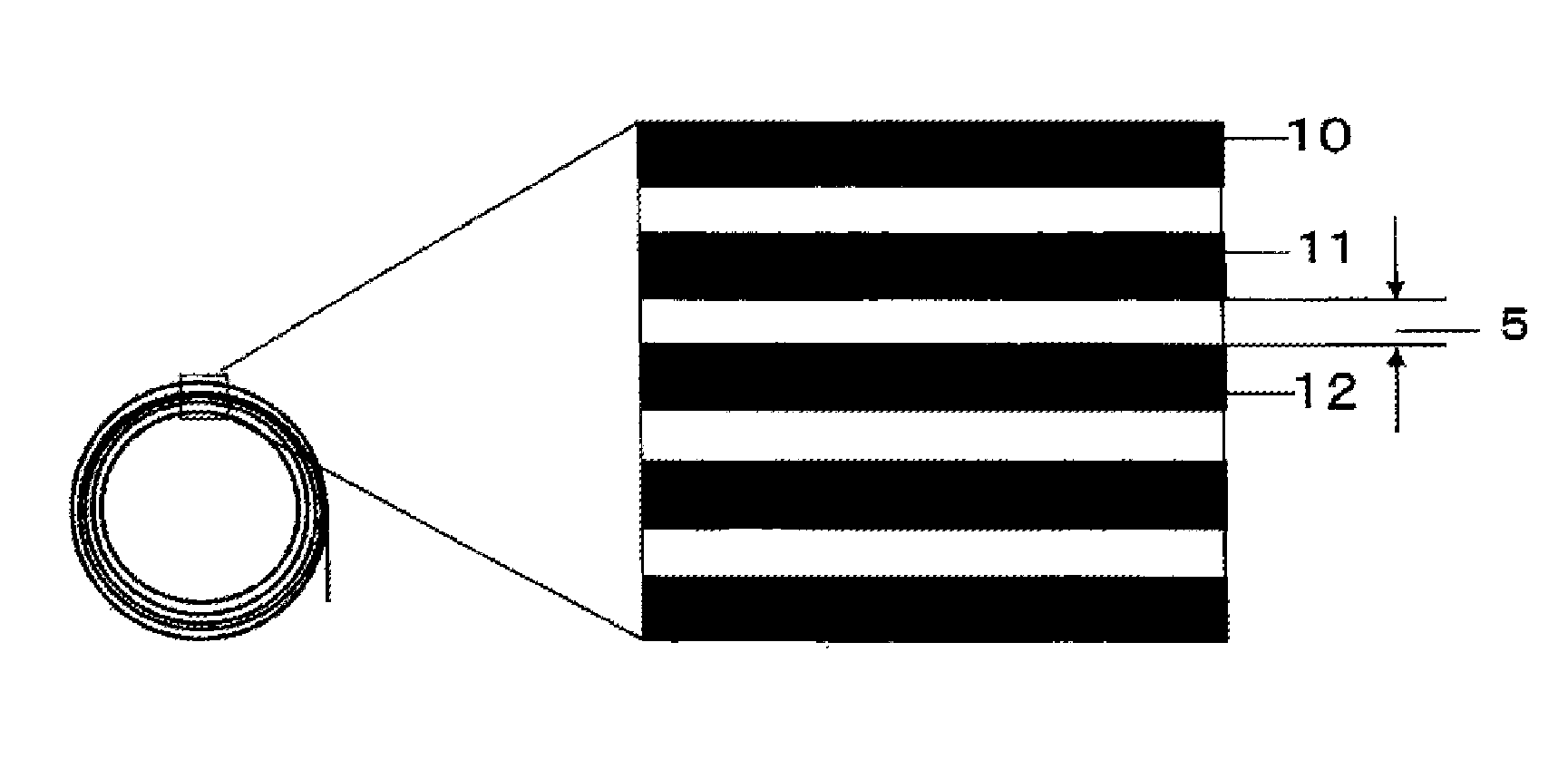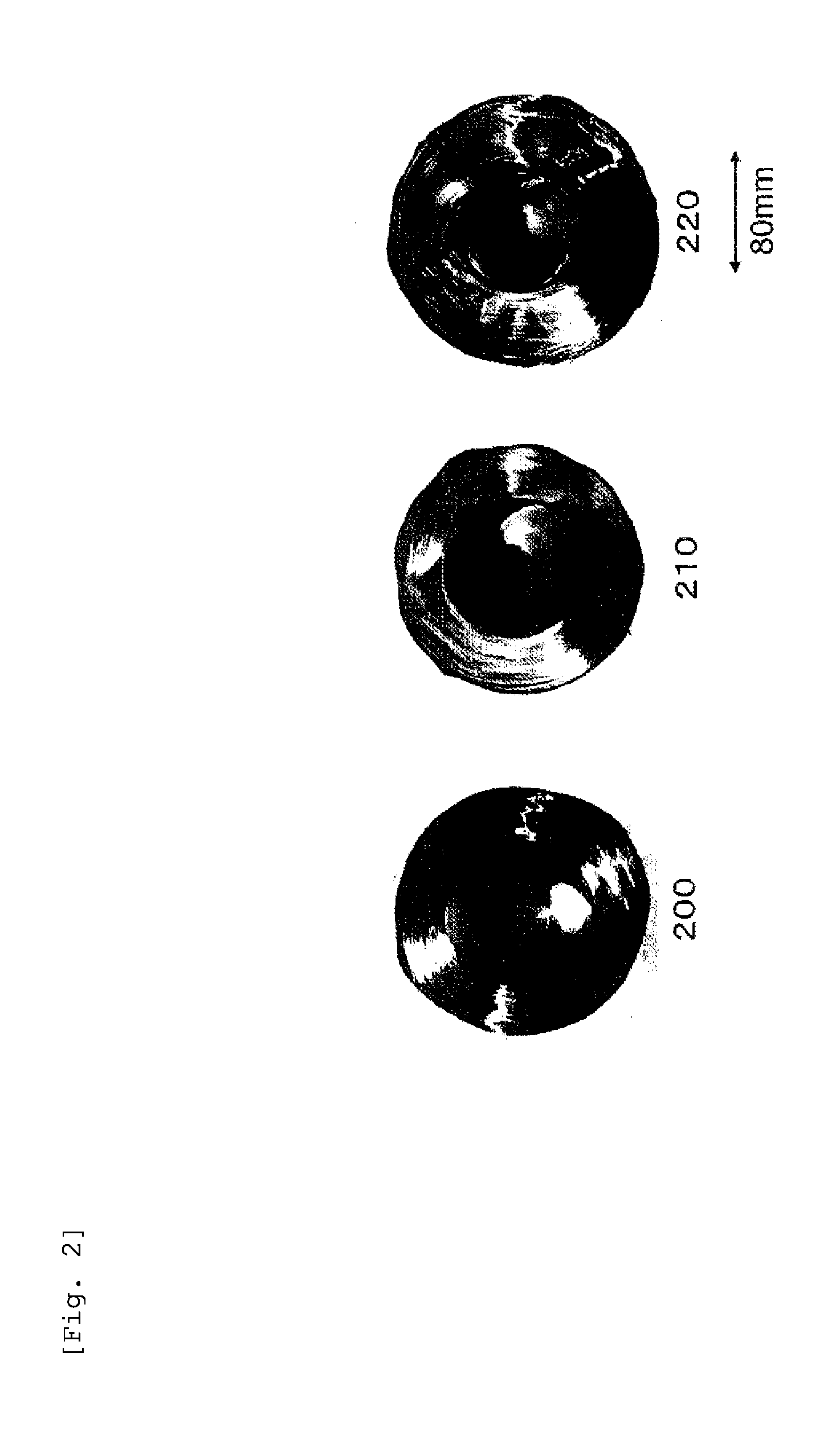Method for producing carbonaceous film, method for producing graphite film, roll of polymer film, and roll of carbonaceous film
a technology of carbonaceous film and polymer film, which is applied in the direction of transportation and packaging, packaging, chemistry apparatus and processes, etc., to achieve the effect of suppressing fusion bonding
- Summary
- Abstract
- Description
- Claims
- Application Information
AI Technical Summary
Benefits of technology
Problems solved by technology
Method used
Image
Examples
example 1
[0119]A polyimide film (trade name: APICAL 75AH film, thickness: 75 μm) manufactured by Kaneka Corporation and having a width of 250 mm and a length of 50 m was prepared as a polymer film 50, and a PET film (thickness: 25 μm) having a width of 25 mm and a length of 50 m was prepared as a slip sheet 80. As shown in FIG. 3, the polymer film 50 and the slip sheet 80 were rewound around a core 100 having a diameter of 100 mm. At this time, two rolls of the slip sheet were prepared, and the polymer film was wound up together with the two slip sheets in such a manner that the slip sheets were provided on both end sides of the polymer film. As shown in FIG. 3, both the polymer film and the slip sheet were wound up under conditions of a tension of 20 N / m and a winding speed of 10 m / min while one of the surfaces of the film was diselectrified by a diselectrifier 40. It is to be noted that the tension was detected using a pick-up roller 300 shown in FIG. 3. After the completion of winding, th...
example 2
[0121]Example 2 was performed in the same manner as in Example 1 except that a PET film (thickness: 50 μm) having a width of 25 mm and a length of 50 m was used as the slip sheet 80. Just after the formation of gaps, all the gaps formed between the layers of the polymer film had a uniform size of 50 μm±2.0 μm. Results are shown in Table 1.
example 3
[0122]Example 3 was performed in the same manner as in Example 1 except that a PET film (thickness: 75 μm) having a width of 25 mm and a length of 50 m was used as the slip sheet 80. Just after the formation of gaps, all the gaps formed between the layers of the polymer film had a uniform size of 75 μm±2.0 Results are shown in Table 1.
PUM
| Property | Measurement | Unit |
|---|---|---|
| temperature | aaaaa | aaaaa |
| length | aaaaa | aaaaa |
| inner diameter | aaaaa | aaaaa |
Abstract
Description
Claims
Application Information
 Login to View More
Login to View More - Generate Ideas
- Intellectual Property
- Life Sciences
- Materials
- Tech Scout
- Unparalleled Data Quality
- Higher Quality Content
- 60% Fewer Hallucinations
Browse by: Latest US Patents, China's latest patents, Technical Efficacy Thesaurus, Application Domain, Technology Topic, Popular Technical Reports.
© 2025 PatSnap. All rights reserved.Legal|Privacy policy|Modern Slavery Act Transparency Statement|Sitemap|About US| Contact US: help@patsnap.com



